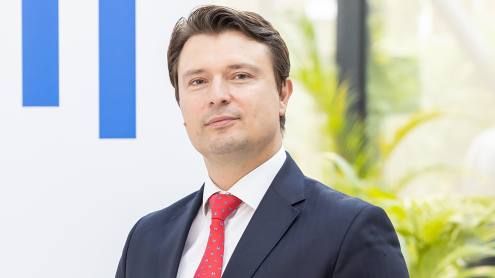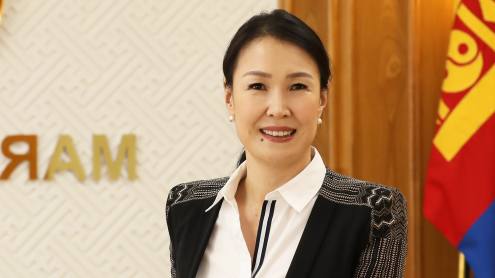In 2022, the World Bank issued the “rhino bond”, a first-of-its-kind, outcome-based issue to achieve conservation outcomes, in this case an increase in black rhino populations in South Africa. In February this year, the bank returned with an inaugural emission reduction-linked bond (ERLB) that aims to provide clean drinking water to children in Vietnam and may also help to scale up voluntary carbon markets.
Jorge Familiar, vice-president and treasurer of the World Bank, says the institution has been at the forefront of innovations related to sustainable development in capital markets. For example, the World Bank issued the first green bond in 2008, the origin of the principles and framework applied to a market that has grown to be worth $3.7tn. “Growth has been exponential and it is clear that investors are thinking more about impact and where their money is going,” says Mr Familiar. “I believe this opens the door to more innovation.”
Preparing the way
He describes the rhino bond as one of the World Bank’s first outcome-based bonds and the ERLB as the next iteration. The main challenge in the rhino bond was to convince investors that key performance indicators for a wildlife conservation project could be used to affect the payout on a bond, and preparation took more than a year. The ERLB was faster but required working with different units in the financial intermediary, Citi, and in the World Bank to make sure everyone was comfortable with the structure, especially as the project in Vietnam is not run by the World Bank.
“The principal of the ERLB is protected and will fund the World Bank’s sustainable development activities, which are usually World Bank projects,” adds Mr Familiar. “However, investors are also generating impact with non-World Bank projects provided they are consistent with our mandate to generate a better life for people.”
The five-year $50m ERLB was privately placed with three institutional investors. Their return is linked to the issuance of verified carbon units (VCUs) from a project that aims to manufacture 300,000 water purifiers for free distribution by the Vietnamese ministry of education and training to make clean water available to around two million children. Carbon credits are generated: greenhouse gas emissions are expected to be cut by almost three million tonnes of carbon dioxide over five years because schools will not have to burn biomass to boil water.
The bond investors forego traditional coupon payments which are converted to an equivalent upfront amount ($7.2m) through a hedge transaction designed by Citi and transferred to the project developer in Vietnam to finance the manufacture of the water purifiers.
“We chose the project in Vietnam after Citi came to us with the idea, which we found very attractive and exciting,” explains Mr Familiar. “There is interest from a lot of financial institutions in this space, but Citi has been a particularly close partner.”
An exceptional investment?
The project is expected to generate 600,000 carbon credits per annum over the next 10 years. Investors will earn semi-annual coupon payments linked to the issuance of VCUs (up to $10.4m total coupon payments). The bond was issued below par, providing investors with a minimum guaranteed return of 0.52%. If the project generates the expected target number of VCUs, investors can expect to earn a total return of approximately 4.84%.
The VCUs are issued on the Verra Registry so that an independent third party verifies the carbon credits and investors’ capital has a direct and measurable impact. Thor Schultz Christensen, deputy chief investment officer at pension fund Velliv, said in a statement that the strong social profile and significant green carbon credit makes this investment exceptional, while providing an attractive return profile.
Mr Familiar says this transaction generates two layers of impact. “The principal is funding World Bank projects and the coupons are generating even more impact,” he says. “It is an interesting proposition for an investor who really wants to make a difference.” He believes the structure is replicable and will pave the way for similar transactions, especially as there are other schools around the world which need to boil water for purification.
Since issuing the two outcome-linked bonds the World Bank has been receiving interest from investors and financial institutions. “We have gone from having to convince investors to participate to getting calls asking if there is anything available,” says Mr Familiar. “These transactions have generated a lot of excitement inside the World Bank and we are working with our colleagues to think about the next opportunity.”
A good example of these new opportunities will be hybrid capital, which will open the door for leverage and maximise the resources that are available to fund projects. The World Bank says that with $1bn of hybrid capital, it can increase its lending by up to $6bn over 10 years.







